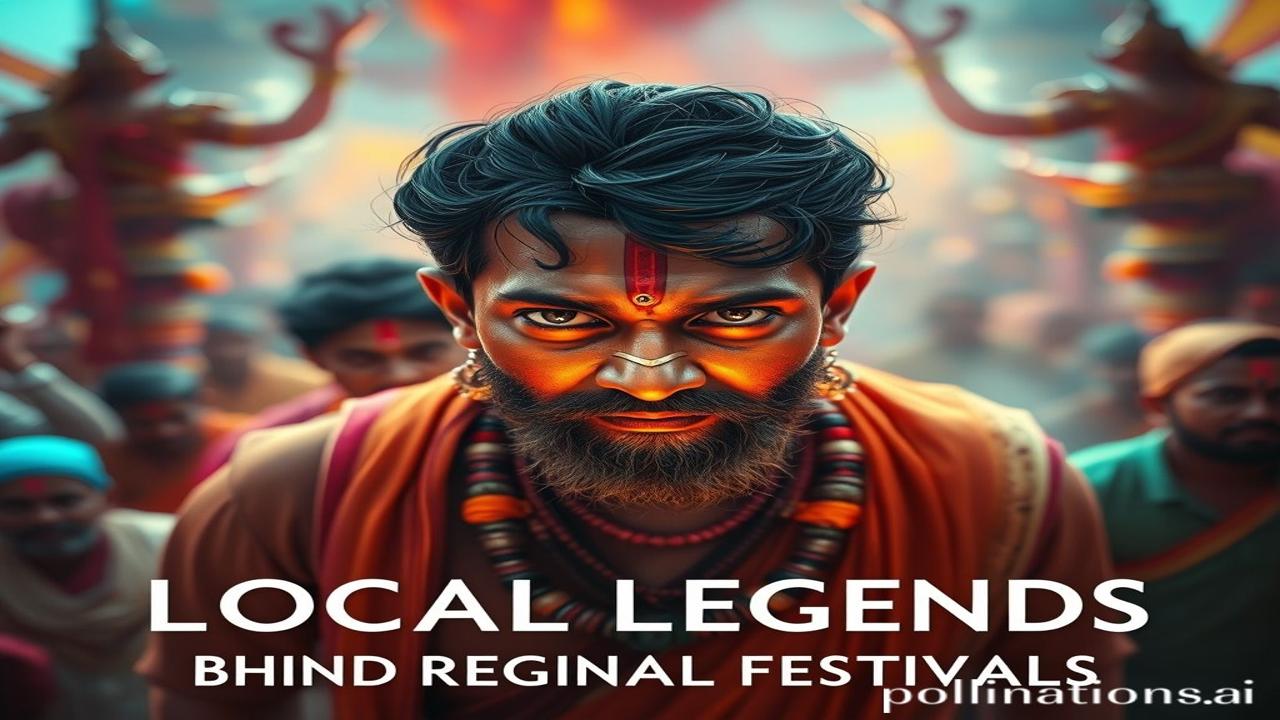Har Gali, Har Tyohar: Unveiling Local Legends Behind Regional Festivals
Kabhi socha hai, jab Diwali ki battiyan jhilmilati hain ya Holi ke rang hawa mein udate hain, toh inke peeche kitni kahaniyan dafan hain? Waqt ki dhool mein chhupi, yeh kahaniyan humare tyoharon ko sirf celebration nahi, ek dharohar bana deti hain. Come, let’s peel back the layers of history and uncover the fascinating local legends that breathe life into our regional festivals.
History Ki Parchaayi: Kya, Kab, Aur Kyun?
Indian festivals are more than just days off or opportunities for shopping. They are living embodiments of our history, culture, and mythology. Every region boasts its unique festivals, often tied to local deities, heroes, or historical events. These aren’t just random dates on a calendar; they’re woven into the very fabric of the community.
Think of Onam in Kerala, celebrating the homecoming of King Mahabali, a benevolent Asura ruler. Or Bonalu in Telangana, a vibrant festival dedicated to Goddess Mahankali. Each festival has a specific date and origin, often tracing back centuries. The “kyun?” (why?) is often more interesting than the “kab?” (when?). It’s about understanding the underlying belief system, the values celebrated, and the historical context that gave birth to these traditions. Many are connected to the harvest, commemorating a successful season and offering gratitude to the gods. Others celebrate victories, remember historical figures, or appease local spirits.
Zameeni Sach: Log, Jeevan, Aur Kahaniyan
Imagine the bustling marketplace of a small village in Tamil Nadu during Pongal. The air is thick with the sweet smell of jaggery and boiling rice. Farmers, their faces etched with the sun’s kiss, gather to celebrate a bountiful harvest. Women, adorned with vibrant sarees, draw intricate kolam designs in front of their homes. Children chase each other, their laughter echoing through the streets.
Or picture a royal court in Rajasthan during Teej. The queen, draped in emerald green, swings on a beautifully decorated jhoola (swing). Dancers twirl to the rhythmic beat of drums, their anklets jingling in time with the music. Artisans display their exquisite craftsmanship, showcasing intricate carvings and vibrant textiles. “Ma Rukmini ne aaj naye kapde pehne, kyunki mandir mein utsav tha…” This isn’t just history; it’s life, breathed into existence through the stories and traditions passed down through generations.
Dharohar Aur Pehchaan: Aaj Ki Baat
These regional festivals aren’t relics of the past; they are living traditions that continue to shape our identity. They connect us to our roots, reminding us of the values and beliefs that have sustained us for centuries. We see its presence in rituals, art, architecture, festivals, language, or values today. Take the example of Ganesh Chaturthi, which transformed from a private family affair into a massive public celebration during India’s freedom struggle, uniting people against British rule. This adaptation highlights the inherent dynamism of our cultural heritage. It’s Bharatiyata, it’s Indianness in its most vibrant and authentic form.
Mazedar Tathya: The Curious Case of Khajuraho’s Dance Festival
Log samajhte hain ki Khajuraho sirf apni erotic sculptures ke liye famous hai… lekin asli sach yeh hai ki Khajuraho Dance Festival, held annually in February, is a celebration of India’s classical dance forms against the backdrop of these magnificent temples. It’s a relatively modern addition, started in 1975, but it perfectly blends ancient artistry with contemporary performance, proving that our cultural heritage is constantly evolving.
Drishya Aur Bhavnayein: Painting a Picture with Words
Imagine walking through the streets of Kolkata during Durga Puja. The air is thick with the scent of incense and the rhythmic chanting of mantras. The temple walls, adorned with intricate carvings, feel cool and smooth to the touch. The sounds of dhak drums echo through the streets, creating a vibrant and electrifying atmosphere. The colours of the sarees worn by women resemble a field of a thousand vibrant flowers. The energy is palpable, a feeling of joyous devotion and communal celebration.
Antim Vichar: Echoes of the Past
These local legends and regional festivals are more than just stories; they are the threads that connect us to our past, shaping our present and inspiring our future. They are a reminder that our culture is a living, breathing entity, constantly evolving and adapting to the changing times. As the ancient Sanskrit shloka goes: “Vasudhaiva Kutumbakam” – The world is one family. And these festivals, in their unique and vibrant ways, remind us of that unity. They remind us that we are all connected by the shared threads of humanity and culture.
